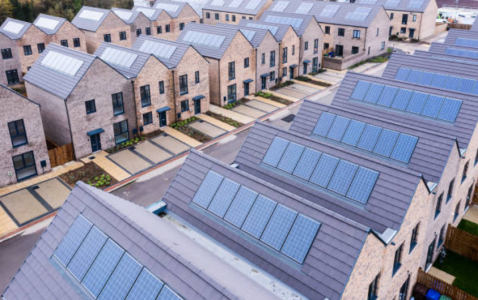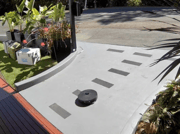Groundbreaking home trick promises faster cheaper builds: 'Players need to embrace it'
By
Gian T
- Replies 0
Australia’s housing crisis has been making headlines for years, with skyrocketing prices, long construction delays, and a growing number of Aussies locked out of the property market—especially in beautiful regional towns.
But what if there was a way to build a quality home in just weeks, not months or years? One innovative family business thinks they’ve cracked the code, and their solution could be a game-changer for seniors, families, and first-home buyers alike.
Meet FutureFit, a family-owned prefab housing manufacturer based in Drouin, regional Victoria. They’re not just talking about change—they’re building it, literally.
Using cutting-edge European panelised building technology, FutureFit has managed to slash construction times dramatically.
Imagine this: 10 townhouses in Melbourne, built from slab to lock-up in just 51 days. That’s less time than it takes to binge-watch your favourite TV series!
Founder Peter Ward is understandably proud. He explains that their prefab kits can be assembled in as little as 2.5 days for a double-storey townhouse.
For a typical three-bedroom family home, you could be moving in within three months—and for under $500,000. In today’s market, that’s almost unheard of.
‘It used to be 38 weeks to build a house, and now most people are saying it’s taking a year or more,’ Peter said.
‘Time is money, and with our system, we dramatically reduce the time it takes a builder to get to lock-up.’
Prefab, or prefabricated, homes aren’t a new idea, but the technology has come a long way since the days of basic kit homes.
Today’s prefab homes are stylish, sturdy, and—thanks to innovations like those at FutureFit—far more energy efficient than traditional brick and tile builds.
Peter shares a personal example: ‘I used to live in a traditional house, and my electricity bill every three months was $1,200.
In a home built using our system, it’s just $130.’ That’s a massive saving, especially for retirees or anyone on a fixed income.
Other benefits include:
Last year, only 48,000 new homes were approved across regional Australia—far short of what’s needed.
RAI CEO Liz Ritchie warns that this shortfall is a ‘ticking time bomb’ for future growth.
She’s calling for 40 per cent of the National Housing Accord’s 1.2 million new homes to be built in the regions, and she’s a big supporter of modern construction methods like prefab.
‘When it comes to housing, our regions face unique challenges—high building costs, worker shortages, and a lack of industrial scale,’ Liz said.
‘Prefabricated housing could be a real solution to these problems.’
Despite the clear benefits, prefab homes still make up only about 3 per cent of new builds in Australia. Peter Ward believes that with more government support and industry buy-in, this could change quickly.
‘If it’s going to become mainstream, you need more players to embrace it, and that probably needs the will of the government to assist in solving the housing crisis,’ he said.
And with regional house prices growing by 62 per cent over the past five years (compared to 37 per cent in the cities), the need for affordable, fast, and efficient housing solutions has never been greater.
Prefab homes aren’t just for first-home buyers or young families. They’re also a fantastic option for downsizers, retirees, and anyone looking for a low-maintenance, energy-efficient home.
With the ability to customise layouts and finishes, today’s prefab homes can be as unique as you are.
The future of housing in Australia could look very different if prefab technology takes off. Imagine a world where waiting a year for your new home is a thing of the past, energy bills are slashed, and more Aussies can afford to own their own place—whether in the city or the bush.
 Do you think this could be the answer to Australia’s housing crisis, especially for seniors and those looking to downsize? Have you had any experience with prefab or modular homes? Share your thoughts, stories, and questions in the comments below.
Do you think this could be the answer to Australia’s housing crisis, especially for seniors and those looking to downsize? Have you had any experience with prefab or modular homes? Share your thoughts, stories, and questions in the comments below.
Read more: Affordable home ownership made possible with this revolutionary financial lending change
But what if there was a way to build a quality home in just weeks, not months or years? One innovative family business thinks they’ve cracked the code, and their solution could be a game-changer for seniors, families, and first-home buyers alike.
Meet FutureFit, a family-owned prefab housing manufacturer based in Drouin, regional Victoria. They’re not just talking about change—they’re building it, literally.
Using cutting-edge European panelised building technology, FutureFit has managed to slash construction times dramatically.
Imagine this: 10 townhouses in Melbourne, built from slab to lock-up in just 51 days. That’s less time than it takes to binge-watch your favourite TV series!
Founder Peter Ward is understandably proud. He explains that their prefab kits can be assembled in as little as 2.5 days for a double-storey townhouse.
For a typical three-bedroom family home, you could be moving in within three months—and for under $500,000. In today’s market, that’s almost unheard of.
‘It used to be 38 weeks to build a house, and now most people are saying it’s taking a year or more,’ Peter said.
‘Time is money, and with our system, we dramatically reduce the time it takes a builder to get to lock-up.’
Prefab, or prefabricated, homes aren’t a new idea, but the technology has come a long way since the days of basic kit homes.
Today’s prefab homes are stylish, sturdy, and—thanks to innovations like those at FutureFit—far more energy efficient than traditional brick and tile builds.
Peter shares a personal example: ‘I used to live in a traditional house, and my electricity bill every three months was $1,200.
Other benefits include:
- Reduced labour costs: With much of the work done off-site, you need fewer tradies on the ground.
- Less weather disruption: Rain, hail, or shine, prefab panels are built in controlled environments, so delays are rare.
- Sustainability: Modern prefab homes are designed to be energy efficient, with better insulation and less waste.
Last year, only 48,000 new homes were approved across regional Australia—far short of what’s needed.
RAI CEO Liz Ritchie warns that this shortfall is a ‘ticking time bomb’ for future growth.
‘When it comes to housing, our regions face unique challenges—high building costs, worker shortages, and a lack of industrial scale,’ Liz said.
‘Prefabricated housing could be a real solution to these problems.’
Despite the clear benefits, prefab homes still make up only about 3 per cent of new builds in Australia. Peter Ward believes that with more government support and industry buy-in, this could change quickly.
‘If it’s going to become mainstream, you need more players to embrace it, and that probably needs the will of the government to assist in solving the housing crisis,’ he said.
Prefab homes aren’t just for first-home buyers or young families. They’re also a fantastic option for downsizers, retirees, and anyone looking for a low-maintenance, energy-efficient home.
With the ability to customise layouts and finishes, today’s prefab homes can be as unique as you are.
The future of housing in Australia could look very different if prefab technology takes off. Imagine a world where waiting a year for your new home is a thing of the past, energy bills are slashed, and more Aussies can afford to own their own place—whether in the city or the bush.
Key Takeaways
- Victorian company FutureFit is revolutionising the housing market by using prefabricated building technology, enabling homes and townhouses to be constructed in a fraction of the traditional time—some completed in as little as 51 days.
- The prefab construction method is more energy efficient and affordable, with examples showing significant reductions in electricity bills and the potential to build a three-bedroom home for under $500,000 within three months.
- The Regional Australia Institute is calling for a major shift to prefabricated homes and modern building techniques, recommending that 40 per cent of new National Housing Accord homes be constructed in the regions to address severe housing shortages.
- Despite growing demand, regional Australia faces unique challenges such as high building costs and worker shortages, leading to a 21 per cent drop in new home approvals over the past 20 years and worsening rental crises outside capital cities.
Read more: Affordable home ownership made possible with this revolutionary financial lending change








